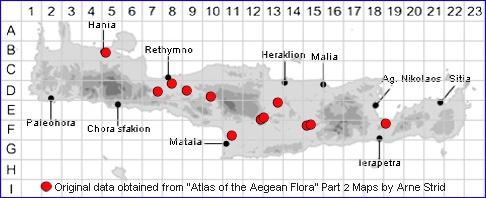
SPECIES DESCRIPTION
MEDICAGO CILIARIS
Family and Genus:- See- LEGUMINOSAE/Subgen. MEDICAGO
Common Names:- None
Homotypic Synonyms:- Medica ciliaris, Medicago echinus subsp. ciliaris,
Medicago intertexta subsp. ciliaris, Medicago intertexta var. ciliaris, Medicago
polymorpha var. ciliaris.
Meaning:- Medicago (Gr) Median-grass, A name used by the Greek physician
and botanist Dioscorides, from a Persian name for lucerne, or medick.
Ciliaris (L) Fringed, (with hairs extending from an edge).
General description:- Rather robust, subglabrous annual, generally branched from
the base.
Stem:-
1) Up to 50 cm, ascending,
Leaves:-
1) Leaflets, obovate, cuneate, denticulate, serrate at least in the upper half.
sometimes with a dark spot.
2) Stipules, ovate to ovate-lanceolate, incise-dentate.
Flower:-
1) Inflorescence, 1-4(-10)-flowered, but usually only 1 or 2 fruits developing.
2) Peduncles, ± equalling the pedicels.
3) Corolla, 5-7 mm, yellow..
Fruit:-
1) Legume, villous, with glandular hairs.
a) young, protruding sideways from the calyx.
b) mature, subglobose, 10-16 mm in diam., with several dense coils, intricately
spiny and covered with multicellular hairs; surface of the coils with a network
of thin veins.
Key features:-
1) Legume, 10-20 mm diam, covered by multicellular hairs. With well-developed,
marginal and/or submarginal spines
Habitat:- Saline meadows by the coast, occasionally some distance inland
(especially in Crete) in vineyards, olive graves and ruderal habitats, to 700 m.
On Crete sparsly scattered across the central reagion.
Distribution:- Scattered in W Greece. - E Mediterranean region.
Flowering time:- Late Mar-mid May
Photos by:- A, N. Other
